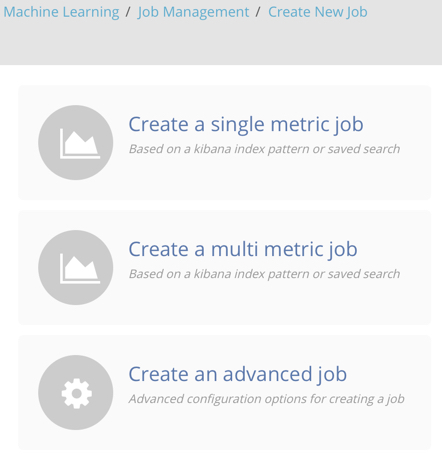WARNING: Version 6.0 of Kibana has passed its EOL date.
This documentation is no longer being maintained and may be removed. If you are running this version, we strongly advise you to upgrade. For the latest information, see the current release documentation.
Creating Machine Learning Jobs
editCreating Machine Learning Jobs
editMachine learning jobs contain the configuration information and metadata necessary to perform an analytics task.
Kibana provides the following wizards to make it easier to create jobs:

A single metric job is a simple job that contains a single detector. A detector defines the type of analysis that will occur and which fields to analyze. In addition to limiting the number of detectors, the single metric job creation wizard omits many of the more advanced configuration options.
A multi-metric job can contain more than one detector, which is more efficient than running multiple jobs against the same data.
An advanced job can contain multiple detectors and enables you to configure all job settings.
If your data is located outside of Elasticsearch, you cannot use Kibana to create your jobs and you cannot use datafeeds to retrieve your data in real time. Machine learning analysis is still possible, however, by using APIs to create and manage jobs and post data to them. For more information, see Machine Learning APIs.
Ready to get some hands-on experience? See Getting Started with Machine Learning.
The following video tutorials also demonstrate single metric, multi-metric, and advanced jobs: